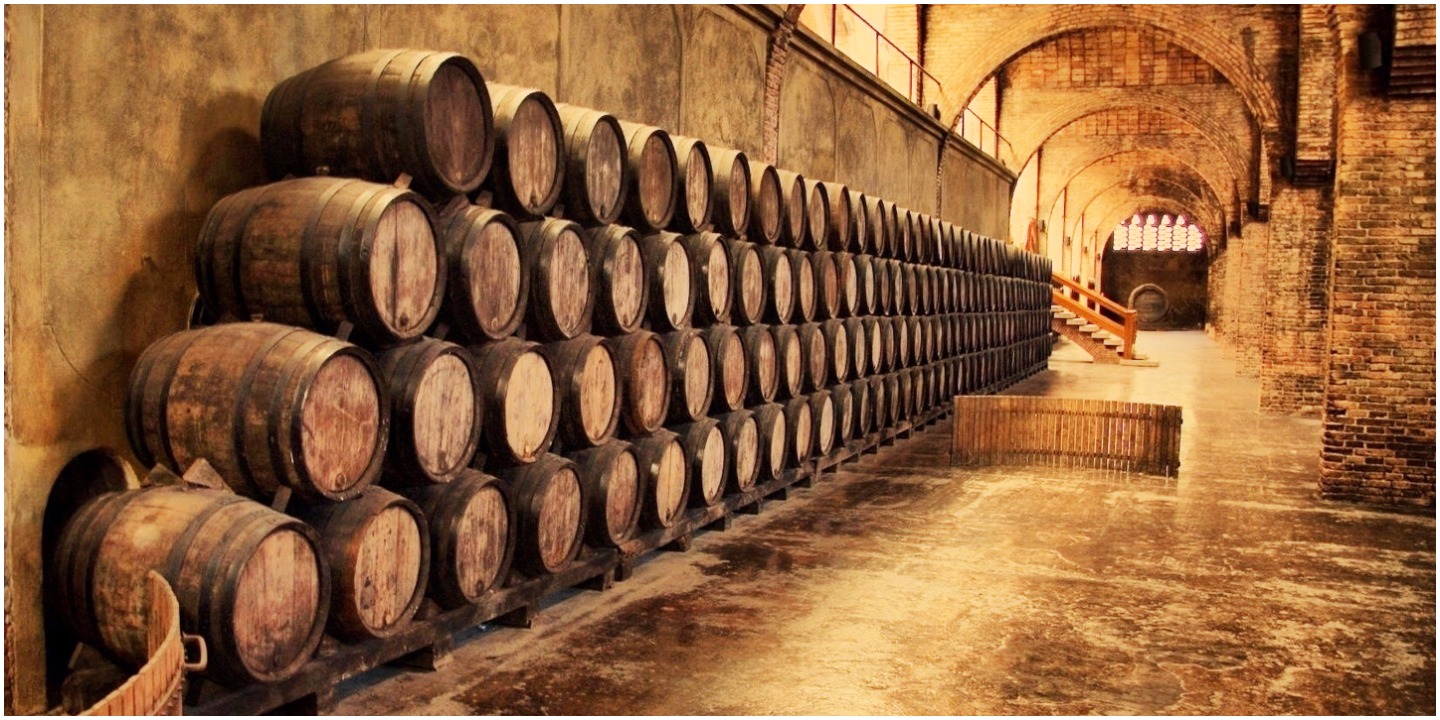Scotch 101: what difference does a cask make to the flavour of whisky?
Uncategorized
A few years ago, legendary independent bottlers Gordon & MacPhail ran a marketing campaign called ‘The Wood Makes the Whisky’ with the aim of making people more aware of the importance of wooden casks in the maturation of whisky.
Speaking at the time, Ewen Mackintosh, COO of Gordon & MacPhail, said:
‘…at Gordon & MacPhail we have always been focused on the close relationship between oak and spirit, and have learned from vast experience that wood really does make the whisky.’
And it’s not just Gordon & MacPhail that think like this; Macallan employ somebody whose job title is – we’re not kidding here – Master of Wood. It’s their job to oversee every aspect of the cask production process, because to Macallan (and many other distillers and bottlers), it really is that important.
Why all the fuss about casks then?
By law, the only ingredients Scotch can be made of are malted barley, water, yeast and – to add colour or consistency – caramel colouring.
That’s it.
Before they mature and age in their casks, there’s not much to separate most whiskies. Sure, the malting processes are important and add a little distinction (especially if they use peat), but it’s the time spent in the cask that’s responsible for 60% of a whisky’s flavour.
Funny story: this was discovered by complete accident.
The story goes that, centuries ago in Scotland, whisky was transported fresh from the distillery in oak casks to be consumed right away. However, a few casks were left unopened, and the whisky sat maturing in the barrel and soaking up some of that oaky goodness. Eventually, a Scot or two opened the cask and stumbled across the first oak-aged whisky. Word spread like wildfire, and now it’s a legal requirement that Scotch must be matured in an oak cask for at least three years.
How does oak affect the taste of whisky?
The reason that oak casks are used to mature Scotch is simple – it’s tough, it’s relatively easy to use, it’s porous and, importantly, it doesn’t leak. (We wouldn’t want any more whisky wasted, would we? The Angel’s Share is quite enough to lose.)
The porous aspect is important – it allows the air from around the region to pass in and out of the barrel and affect the character of the whisky. That’s why a whisky from the coast will taste different from a whisky that’s matured inland.
Oak is also full of naturally occurring oils called vanillins. Over the course of the time sitting in the cask, the whisky passes in and out of the oak and draws these oils out with it – adding to the profile and character of the whisky.
However, there are also tannins in younger oak that can enter the whisky and make it dry and bitter. (That’s why whisky is matured in aged oak barrels – they have significantly lower amounts of tannins.)
Do different oaks affect the taste?
In short, yes.
There are three types of oak that are usually used to mature whisky: European Oak, American Oak and Japanese Oak. Or, to give them their fancy Latin names: Quercus robur, Quercus alba and Quercus mongolica.
Each of these oaks has a distinctive profile that affects the character of the whisky.
European Oak:
The European Oak is the classic oak that has been used to mature Scotch for centuries. Originally, this oak was grown in the UK but our oaks were a little slow to grow and – because of the oh-so-reliable British weather – were growing twisted and therefore prone to leaking. Eventually, we started buying them from Russia instead. Trees grow straight in Russia.
Then, in the mid-1860s, the UK started to import sherry from Spain. The sherry arrived in barrels of Spanish oak that was much cheaper than the Russian oak. Classic British frugality kicked in, and soon we began buying these old casks and using them to mature our whisky. (We’re getting ahead of ourselves here, more on ex-sherry casks later.)
When whisky has been aged in European Oak, they develop a certain character and profile. Normally, you can pick up the full, intense aromas of a European Oak.
American Oak:
American Oak casks have only been used widely since the end of World War Two (as the government passed a law that said that American whisky had to be matured in wooden casks after the devastating effects of Prohibition on the coopering industry.)
American Oak is great for whisky – not only does it grow quickly and straight, but it has high levels of vanillins that produce a vanilla flavour.
According to Whisky.com, ‘the size of cask produced (known as an ASB – American Standard Barrel) is also considered to mature whiskey at the optimum rate as there is the perfect ratio between the amount of liquid and the surface area of the inside of the cask. The result of this is that nearly 90% of all the world’s whisky is now matured in American oak bourbon casks.’
Japanese Oak:
Japanese oak, sometimes also called mizunara oak, has been used since the 1930s to give Japanese whisky a unique set of flavours as a result of the incredibly high vanillin count. However, the mizunara oak is very porous and prone to leaking and spilling precious whisky. (As such, most Japanese whisky is aged in sherry or bourbon casks and then given a second stint in mizunara oak to gain its distinctly Japanese characteristics.)
If you’re interested in finding out a little more about the science behind the relationship between oak and whisky, then you should definitely check out this article by Whisky Science. It goes into a lot of detail about tannins, vanillins and hemicellulose and how they break down and affect the flavour of the whisky. It’s fascinating, but far too complicated for us to try and sum up. (There’s some pretty intense chemistry in there, so pour yourself a nice dram before you read it. You’ll need it!)
Is it only the type of wood that affects the flavour?
Not at all.
In fact, the biggest way that the cask can have an effect on the flavour of the whisky is when whisky is aged or finished in a cask that’s been used to age or store another alcohol beforehand.
Whisky aged in a sherry cask is usually richer, with deeper and fuller flavour and adds a nice fruitiness to the nose and palate. For obvious reasons, you get the sweet taste of sherry at the finish. In a blind test of bona fide whisky buffs, it was discovered that whiskies that had been aged in a sherry cask were consistently ranked higher than their non-sherry-cask counterparts, and that’s quite something.
Whisky aged in a bourbon cask has a slightly different character. Bourbon whiskey is always matured in new casks that are heavily charred to open up the wood and increase the rate of maturation. The charring process also breaks up molecular structure of the wood and releases more of the natural sugars and flavours – that’s why bourbon casks produce a sweeter whisky and a vibrant colour.
A lot of independent bottlings are a mix of these processes – they are aged in oak casks at the distillery to give them their distinctive profile and then matured in sherry or bourbon casks for a unique finish.
What about the size of the cask?
Good question.
Indeed, the size of the cask does have a notable effect on the overall maturation of the whisky, and on the final character and profile. That’s because the ratio of wooden surface area to spirit affects the speed at which the whisky can nip in and take all of the flavour from the wood. The smaller the cask, the quicker the maturation.
Butts are the largest (Sir Mix-a-Lot would be happy) and produce the most complex whiskies. Because the surface area to whisky ratio is low, the whiskies take longer to mature, giving the alcohol more time to break down flavour compounds and oxidise. Typically, whisky matured in a butt has less woody flavours and more complex tobacco and spice flavours. (And, of course, sherry notes if the butt was a sherry butt – which they usually are.)
Hogsheads are in the middle. They’re usually barrels that have been extended for a slower maturation. Hogsheads usually produce a slightly sweeter whisky with more vanilla than a butt.
A barrel is the smallest cask for whisky maturation. The surface area to whisky ratio is lower which means a much quicker maturation and a much sweeter whisky with fruity flavours.
If you’re in any doubt that the cask makes any difference to the taste of the whisky, why not try one of these sherry cask whiskies. We promise, you’ll notice the difference. (Be warned, there’s no going back once you have.)



